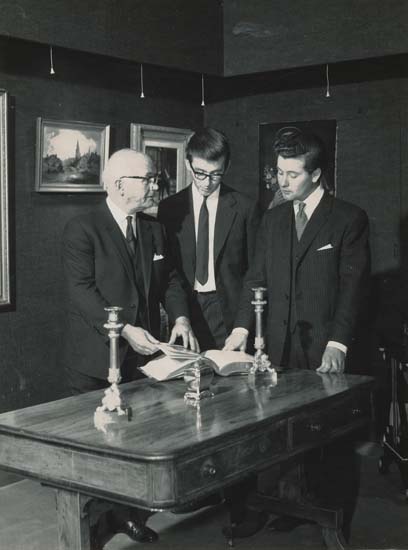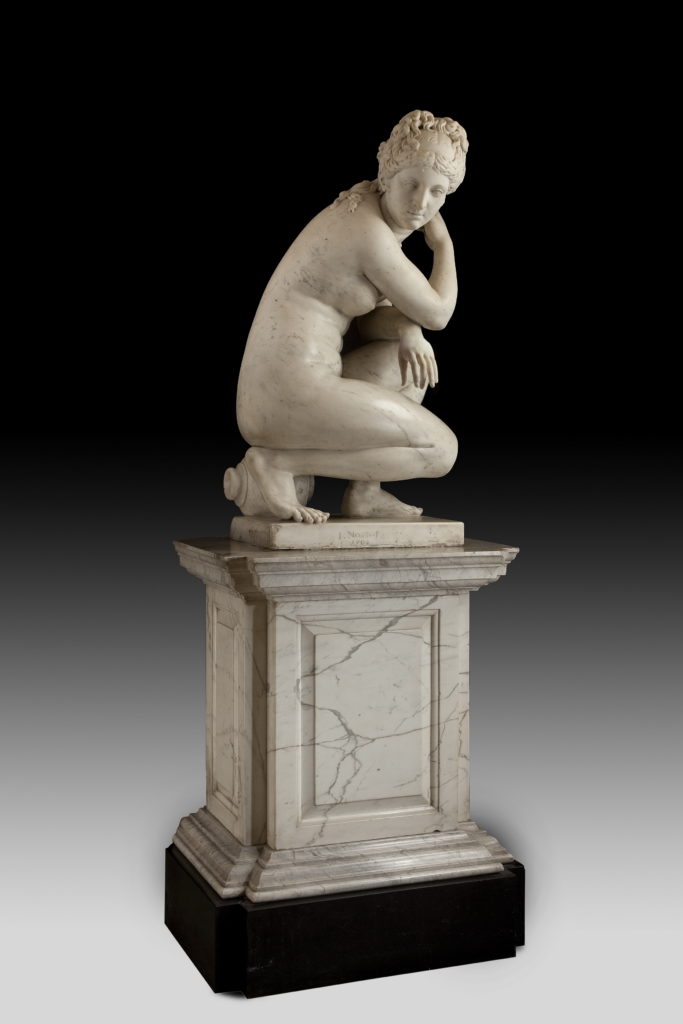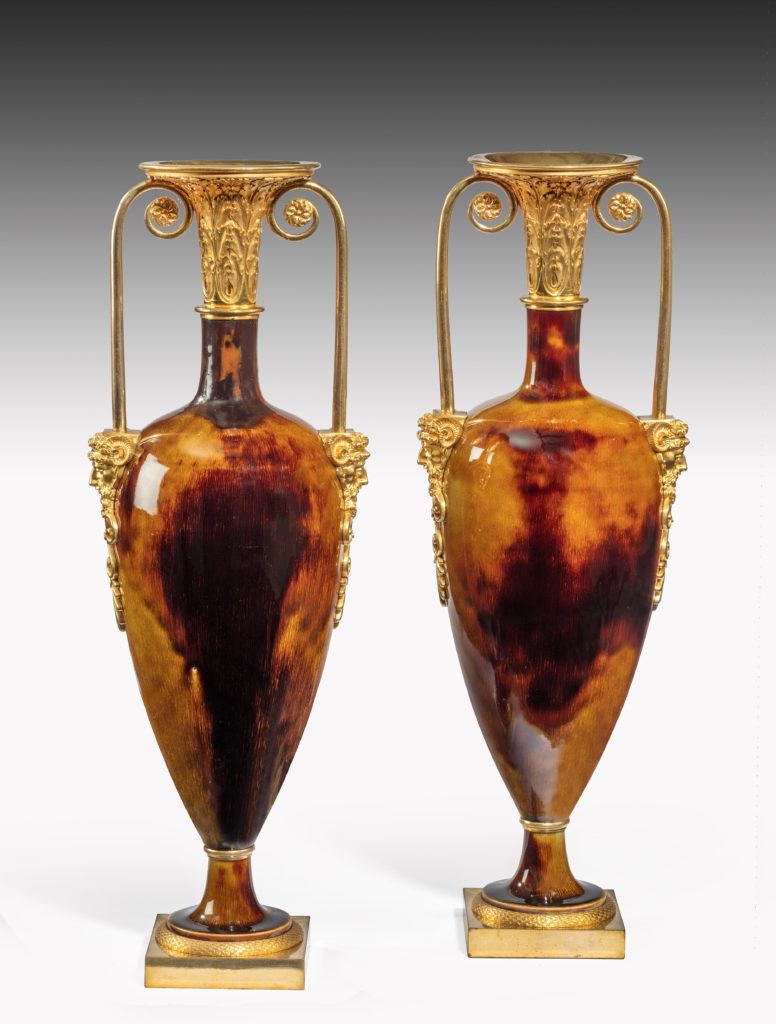Joining the family business in 1999, after seven years working for Sotheby’s, Jonathan Coulborn had a role to fulfil in taking Thomas Coulborn & Sons through the next stage of its journey. And, while the business has remained consistent in its success since its inception in the 1930s, its adaptability is ascribable to the passion and individuality of Jonathan, his father and grandfather, who each shaped the gallery to reflect their own personal styles. “You have to figure out how you are going to be a dealer as an individual,” Coulborn explains as we discuss his last 20 years at the helm of the Sutton Coldfield-based gallery. “it isn’t something you necessarily plan; it becomes apparent to you.”

Situated within Vesey Manor, a dwelling built circa 1450 for the Bishop Vesey, Bishop of Exeter under Henry VIII, the gallery has stayed in the same location since it began but it’s identity within the industry has changed somewhat. Thomas and Mary Coulborn established their antiques business before rebranding as Thomas Coulborn & Sons in the 1950s when their twin sons, Peter and Paul, joined to take over the company. As Paul moved on to establish his own cabinet-making business in the 1970s, Peter continued, specialising in 18th Century and Regency antique furniture.
“My father was extremely gifted in the workshop and would do lots of finishing work, colouring, staining and waxing,” Coulborn recalls as he goes over the work of his father Peter, and his wider influence in the industry such as the establishment of the British International Antiques Fair at the NEC. “However, my academic background was more on the research side and I was less confident in the workshop, so you naturally move towards your strengths.”
Since joining the company, Coulborn has moved the gallery away from specialising in just Georgian or Regency furniture pieces, following his interest in objects which are less dependent on fulfilling a function and represent something of beauty or collectability. “That is how we have evolved,” he says. “When my father was running the business, fashions were different. A lot of clients wanted to emulate a Georgian or Regency interior but today, as interiors have developed, it has become less about eras and more about celebrating individual pieces.”
With Jonathan sourcing items from his travels, the gallery is proud to showcase unique stories and narratives with discoveries from places such as Mexico, Peru, China and Goa. “It is very important to ensure we can tell the stories personally,” he says. “As well as looking for items that I know certain collectors may be interested in, I like to be proactive about the selling process.”
Today, as interiors have developed, it has become less about eras and more about celebrating individual pieces – Jonathan Coulborn, owner of Thomas Coulborn & Sons


While the last two decades have presented a new era for the gallery, its transition is also down to the rise of the digital age. “In my grandparents’ day there would be queues outside the gallery every Saturday morning,” Coulborn reveals before going on to say how his father would source the best of what he could find in the Midlands and the North, albeit more challenging in a pre-internet world. “Now,” he continues, “the internet has made every small local sale available to everyone. So, this means there isn’t the same chain or passing on of goods and the competition is more open.” Given this progression, it has allowed the company to not only interact with different groups of clients but also build long-distance relationships.
Coming out of 2020, the company is seeking to build on its digital presence and tell stories in a new way. “We have been doing video viewings,” Coulborn explains. “This works well when talking a potential client through a series of objects within the gallery. We would like to take it one step further and allow the public to engage with these stories too, maybe through Instagram Reels or mini video clips.” Acknowledging the power of social media, he adds: “You define yourself by what you buy and what you offer to clients. Platforms such as Instagram can provide a major springboard in solidifying this identity to a wider audience.”
This readiness to adapt and remain relevant to oncoming generations is what has carried the gallery through its previous decades. The team has also, for instance, participated in some of the digital fairs which have taken place over the last year, although Jonathan feels it is difficult to meet new people within this arena. “It is a people-led industry,” he says. A regular exhibitor at shows such as Masterpiece, Coulborn senses the industry will be keen to physically interact again as soon as restrictions are lifted. This is one of the reasons behind his decision to join Effetto with hopes to expand his network through the platform as a founding partner.

When looking back over his own acquisitions, there are two highlights which immediately spring to his mind. The first is a bigger-than-life-size marble depiction of The Crouching Venus, the Goddess of Love, which now sits on display within the V&A museum. “This Neo-Classical composition was carved in 1701 in London for Umberslade Hall in Warwickshire,” he says. “While the original compositions derive from Ancient Greece, this is one of the first-known English versions.” The second is a pair of porcelain and Ormulu urns by renowned Parisian designers Dihl & Guérhard, who created these showstopping creations at the beginning of the 19th Century. What was unique about how Dihl & Guérhard made porcelain was their ability to imitate other materials. In this instance, they mimicked tortoiseshell which had become popular at the time and, through exploring new techniques, spectacular results were achieved.
Stories like this continue to motivate Coulborn in seeking the next magical finding. “I think it is immensely exciting when you can tell the story of an object and bring together information on how it was commissioned, who designed it, or who owned it.” he says. “Getting to the bottom of a story and unlocking a part of history is very satisfying.” And, as Coulborn’s passion inspires another generation to come forward through the ranks, we see how important the sharing of these secrets can be, with us as viewers, readers, and admirers of such captivating treasures.
Effect Magazine is brought to you by Effetto



